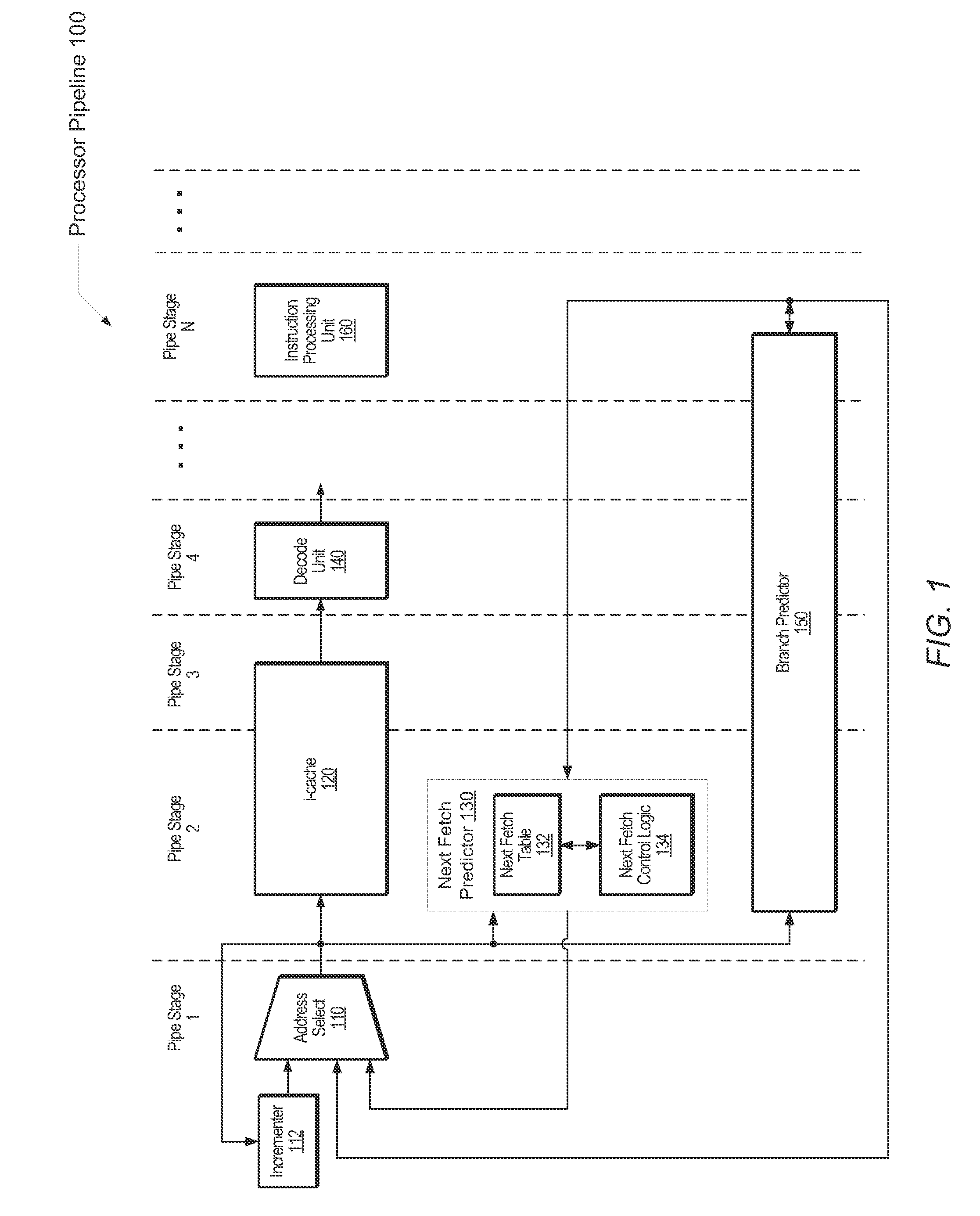Next fetch predictor training with hysteresis
a predictor and hysteresis technology, applied in the field of microprocessors, can solve the problems of preventing useful work from being performed, and reducing the performance of the processor, so as to achieve the effect of higher prediction accuracy
- Summary
- Abstract
- Description
- Claims
- Application Information
AI Technical Summary
Benefits of technology
Problems solved by technology
Method used
Image
Examples
Embodiment Construction
[0009]Systems and methods for efficient branch prediction. In one embodiment, a processor includes two branch predictors. A first branch predictor may quickly generate branch prediction data, such as a branch direction and a branch target address. In some embodiments, the first branch predictor generates branch prediction data within a single cycle. The second branch predictor may generate branch prediction data at a later time and with higher prediction accuracy. Control logic may determine whether the branch prediction data from each of the first and the second branch predictors match.
[0010]If the control logic determines a mismatch occurs, the control logic may train the first predictor. Training may include updating stored values in the first predictor with the branch prediction data generated by the second branch predictor. However, despite the detected mismatch, the control logic may determine not to perform training. The first predictor or another location may store an indica...
PUM
 Login to View More
Login to View More Abstract
Description
Claims
Application Information
 Login to View More
Login to View More - R&D
- Intellectual Property
- Life Sciences
- Materials
- Tech Scout
- Unparalleled Data Quality
- Higher Quality Content
- 60% Fewer Hallucinations
Browse by: Latest US Patents, China's latest patents, Technical Efficacy Thesaurus, Application Domain, Technology Topic, Popular Technical Reports.
© 2025 PatSnap. All rights reserved.Legal|Privacy policy|Modern Slavery Act Transparency Statement|Sitemap|About US| Contact US: help@patsnap.com



